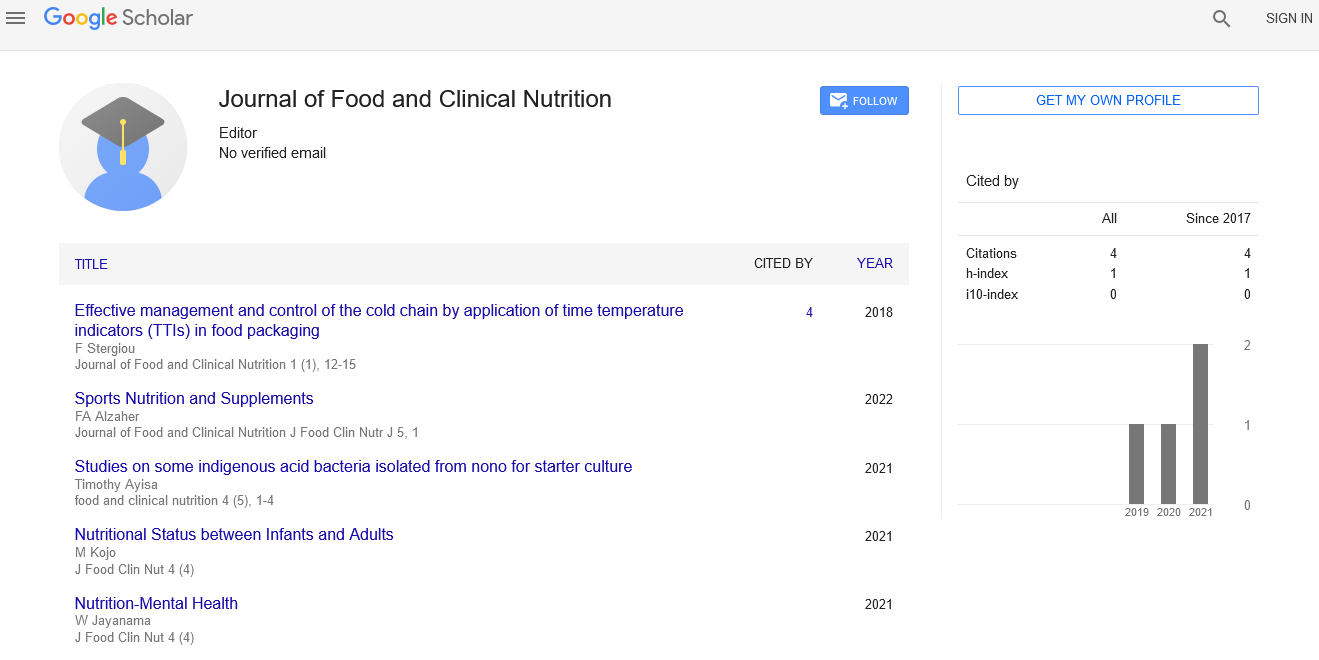nutritional administration of medical inpatients
Received: 04-Apr-2024 Editor assigned: 06-Apr-2024 Accepted Date: Apr 20, 2024; Reviewed: 08-Apr-2024 Revised: 10-Apr-2024 Published: 30-Apr-2024
Citation: Homes E (2021) Nutritional Administration of Medical Inpatients. J Food Clin Nut Res. 4(4):1
This open-access article is distributed under the terms of the Creative Commons Attribution Non-Commercial License (CC BY-NC) (http://creativecommons.org/licenses/by-nc/4.0/), which permits reuse, distribution and reproduction of the article, provided that the original work is properly cited and the reuse is restricted to noncommercial purposes. For commercial reuse, contact reprints@pulsus.com
Introduction
Malnutrition is a typical condition in hospitalized patients that is frequently underdiagnosed and undertreated. Clinic malnutrition has multifactorial causes and is related with negative clinical and financial results. The connection between hunger and clinical adverse results, e.g., muscle squandering, higher disease rates, longer length of emergency clinic stay, grimness and death rates, is plainly settled. In high income nations, where admittance to food ought not to be restricted, every third patient is in danger for hunger or currently malnourished at clinic confirmation. Most patients further lose weight during their emergency clinic stay, and, as result, their healthful status crumbles. There are a few elements prompting reformist unexpected weight reduction, like gastrointestinal indications, idleness, sorrow or low state of mind, old age, impacts of disease on protein and energy homeostasis, protein catabolism, irritation, hormonal capacity and loss of craving. Loss of craving might create during emergency clinic stays either as a result of a basic infection or treatment or pre-exist as an essential condition. This deficiency of craving emerges as a physiological reaction to intense ailment and inclines inpatients to genuine caloric and protein shortfalls. In blend with immobilization and an articulated fiery and endocrine pressure reaction, these wholesome shortages add to muscle squandering and reformist crumbling of metabolic and useful status, especially in clinical inpatients with numerous morbidities.
Description
Nutritional support in hospitals in a perfect world depends on two fundamental constructions: A hospital nutrition steering committee and multidisciplinary nutritional support teams. The sustenance controlling council is working inside the clinical administration structure (sets wholesome norms, conventions and rules) and has an immediate admittance to medical clinic the executives. Individuals from the nutrition steering committee of trustees ought to be drawn from the administration, and incorporate senior portrayal from clinical staff, providing food, nursing, dietetics, drug store and other medical services experts. A nourishing help group includes a chief capacity inside the clinic, executing norms, conventions and rules in day by day clinical practice. Such a group comprising of doctors, dieticians, attendants, and drug specialists, guarantees and further develops nourishing medicines quality and wellbeing, and is persistently checking and streamlining strategies of healthful administration. Interdisciplinary collaboration and great correspondence between medical care experts is significant and obligatory to offer an individualized dietary help to all patients who need it. The recognizable proof of lack of healthy sustenance has been regularly founded on anthropometric, biochemical and actual boundaries, among others. There is no generally acknowledged highest quality level (best strategy) for the evaluation of healthful status. Regularly utilized standards incorporate accidental weight reduction (level of body weight) in the beyond 3–6 months, low BMI, diminished bulk, decreased dietary admission in the previous week, decreased absorptive limit, and illness trouble/aggravation. Meeting the wholesome prerequisite is imperative to keep up with or put on weight, bulk and capacity, to work on clinical results, and lessen confusions and hospitalization rates. Dietitians and clinical staff prepared in sustenance backing ought to guarantee that the patients' dietary admission meets the singular energy, protein, liquid, electrolyte, mineral, micronutrients and fiber needs. The action levels and the hidden clinical condition (e.g., catabolism, pyrexia, gastrointestinal resistance, possible metabolic flimsiness), just as the probable span of sustenance support, ought to likewise be considered.
Conclusion
Nutritional support has been demonstrated to be an exceptionally viable treatment choice to forestall or potentially treat lack of healthy sustenance, diminishing bleakness and death rates. Nutritional intercessions merit as much consideration as some other restorative mediation, and clinicians should expect to expand their viability and limit incidental effects. Further examinations ought to likewise explore the expense adequacy of dietary mediations in medicinally sick patients. It will be similarly essential to figure out which clinical inpatients have the most advantage from nourishing help intercessions through metabolomics and micro biome research, strolling towards a proof based customized nutrition approach.





